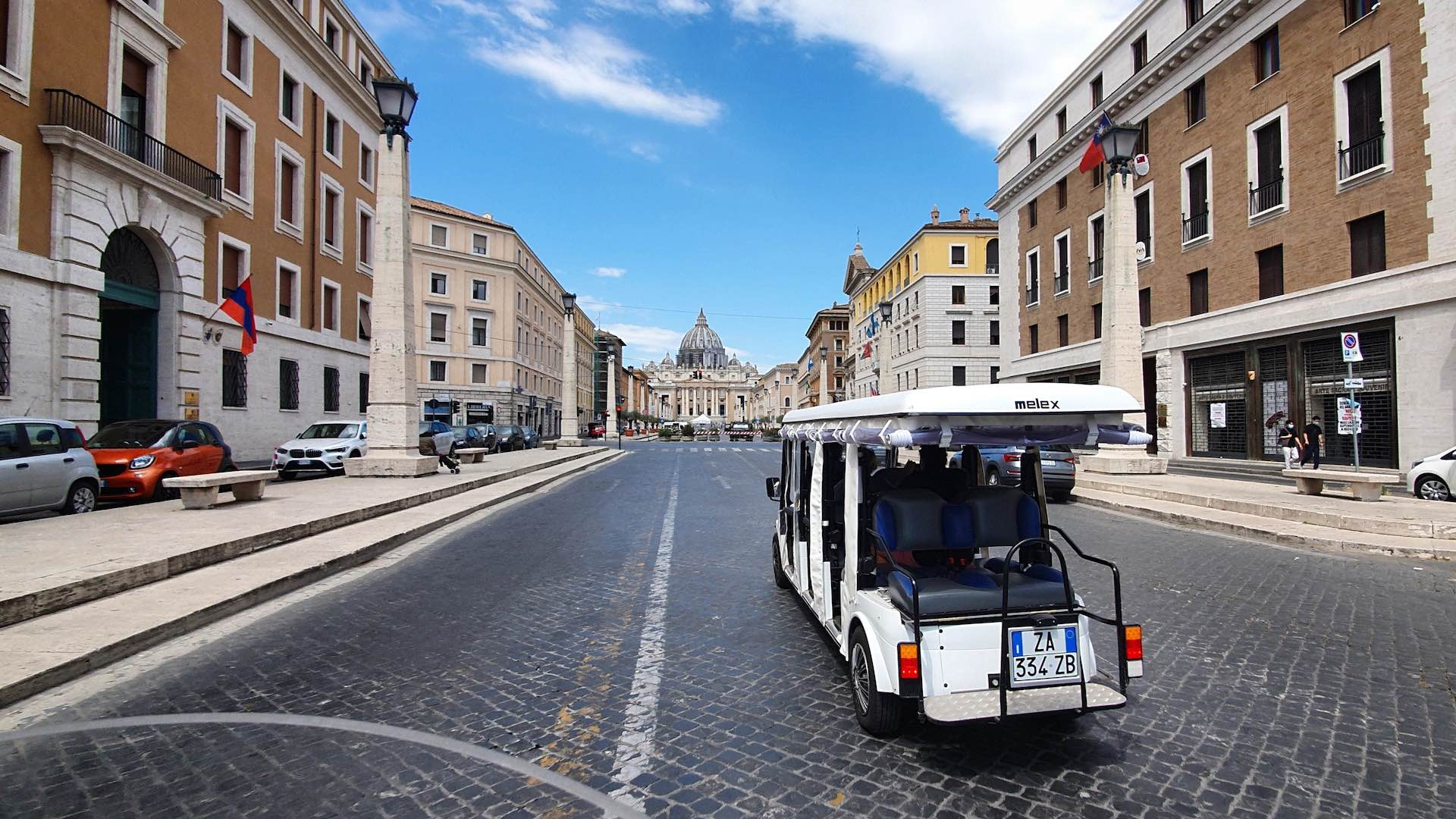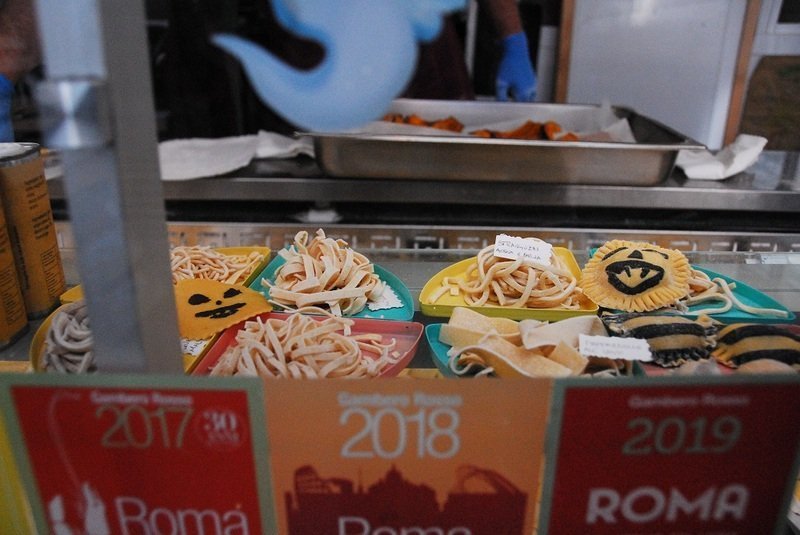Visiting Rome is a wonderful experience, but it can be negatively impacted by long queues that form during peak tourist seasons to access the main attractions.
It is important to be advised that most of Rome’s points of interest are ticketed. Increasingly, attractions that used to be free now require a small fee to enter. Booking those tickets in advance always proves to be the winning move!
This article aims to provide clarity on what is ticketed, why those tickets are put in place, and how best to strategize your plans in Rome to not let tickets dampen your trip!
Do you need reservations for attractions in Rome?
Unlike some other European capitals, you do need tickets for most entrances in Rome. There are a number of reasons for this:
- Cultural preservation: All that has remained from ancient Rome is a marvel and nods toward the architectural capabilities present at that time. However, it has taken years of careful preservation and funds to make that possible. Ticket sales for sites are used to re-invest in their heritage conservation.
- Organization issues: To say that Rome is a widely visited city would be an understatement. Throngs of people come to see the biggest landmarks, and so as a strategy to try and contain these crowds, ticket sales are used in order to shorten lines and limit the number of people who can enter a site during a given time.
- Safety issues: The centuries-old landmarks of Rome as well as the artifacts held in more contemporary buildings remain delicate in nature. For the safety of visitors as well as in terms of protecting these priceless artifacts from harm, it is best to have crowd-control procedures in place, such as the ticketing of venues.
However, as locals of the Eternal City, we are here to assure you that making a budget for tickets to Rome’s greatest attractions is well worth it. These experiences allow you to be absorbed by one of the grandest histories of all time, and provide a once-in-a-lifetime opportunity. You might as well explore properly!
Where should you buy tickets?
Yes, it is possible to buy tickets on-site for these most attractions, however we would strongly advise against doing so.
Especially during certain periods of the year, Rome becomes incredibly crowded and you can expect very long lines and hours of waiting. This could be harmful to your trip especially during a short stay, for example a one day trip to Rome or even a three day trip.
It is best to buy tickets through an online vendor. We offer more information on this at the end of the article, so read on!
What do I need tickets for in Rome?
If you have studied the Rome attraction map then you know that there are numerous points of interest in the city.
However, the classic landmarks aren’t all that there is to see in the Eternal City… not by a long stretch!
We have compiled a more comprehensive list of museums, galleries, historical sites, festivals and fairs that require ticket entries:
Museums
- Vatican Museums: These include the Sistine Chapel and Raphael rooms.
- Capitoline Museums: Located on the Capitoline Hill, it features ancient Roman art and artifacts.
- Borghese Gallery and Museum: Houses a vast collection of sculptures and paintings, including works by Bernini and Caravaggio.
- National Roman Museum (Museo Nazionale Romano): Comprised of several sites like Palazzo Massimo alle Terme, Palazzo Altemps, Crypta Balbi and Baths of Diocletian.
- MAXXI – National Museum of 21st Century Arts: Dedicated to contemporary art and architecture.
- Galleria Nazionale d’Arte Moderna e Contemporanea (GNAM): Focused on modern and contemporary Italian art.
- Ara Pacis Museum: Houses the Ara Pacis Augustae, an ancient altar dedicated to Pax, the Roman goddess of Peace.
- National Etruscan Museum at Villa Giulia: Displays artifacts from the Etruscan civilization.
- Castel Sant’Angelo: Now a museum, this 2nd century fortress features the Roman emperor Hadrian’s tomb.
- Galleria Spada: Built in 1927, this palace turned museum is home to countless 16th and 17th-century paintings.
- National Gallery of Ancient Art in Barberini Palace: An artfully crafted palace once owned by Pope Urban VIII that now holds ancient art.
- National Museum of Palazzo Venezia: Located in Piazza Venezia, this museum is home to fine art and antiquities.
- Museo Centrale Montemartini: Displays ancient Roman and Greek sculpted artifacts.
- MACRO – Museo d’Arte Contemporanea Roma: Once a brewery and slaughterhouse, this contemporary art museum is a haven for modern art lovers everywhere.
- Galleria Doria Pamphilj: A 17th century palace that houses an extensive fine art collection.
- Palazzo Colonna: A former palace with meticulously crafted frescos, gardens and painting collections.
- Museo Carlo Bilotti: This orangery-turned-gallery features modern masterpieces, like those by Andy Warhol.
- Museo delle Mura: An archeological museum housing ancient moasics and other antiquities.
- Museo Pietro Canonica: Set in Italian sculptor Pietro Canonica’s exhibition rooms, featuring his life’s work.
- Museo Hendrik Christian Andersen: Modern art museum with sculptures, paintings and other mixed media art exhibitions.
- Museo di Roma in Trastevere: Features fine art, photographs and recreations of ancient clothing and scenes.
- Museo Leonardo da Vinci: A small gallery featuring modern recreations of Leonardo da Vinci’s inventions.
- Casa di Goethe: Famed German writer Johann Wolfgang von Goethe’s Roman residence turned fine art and literary museum.
- Palazzo delle Esposizioni: A palace exhibiting countless contemporary art displays and a cinema.
- Museo Ebraio di Roma: A Jewish art and history museum located in the Great Synagogue of Rome.
- Palazzo Braschi: First opened in 1930, this civic museum houses both modern and ancient art.
- Museo Napoleonico: Exquisitely crafted palace and art museum dedicated to the famed Napoleon Bonaparte.
- Villa Medici: A 16th-century villa featuring extensive gardens and art exhibitions.
- Casa Museo di Giorgio de Chirico: A 16th-century palace with historically accurate furnishings and fine art.
- Muciv – Museo delle Civiltà: Houses prehistoric and ethnic art from around the world.
Recurring Fairs & Events:
- Rome Film Festival: An annual film festival featuring international and Italian films.
- Estate Romana: A summer festival with various events, concerts and performances across the city, for example, Rock in Roma.
- Roma Jazz Festival: Celebrates jazz music with performances by international and local artists.
- 1st of May Concert: A free, annual concert in celebration of Italian labor day.
- Festa della Repubblica (2nd of June): There is a military parade at the Imperial Forums and the garden palace of the Italian president is open to the public in the afternoon.
- New Year’s Eve Concert: Ring in the new year with this free New Year’s Eve concert, often held in Circo Massimo.
Historical Sites in Rome with Ticket
- Colosseum: This ancient amphitheater is an iconic Roman landmark.
- Roman Forum: These ruins were once a bustling ancient Roman marketplace.
- Pantheon: Once a holy Roman temple, this 2nd-century monument boasts the biggest unsupported dome to date.
- Baths of Caracalla: These 3rd-century bathhouses were once the second largest in Rome.
- Catacombs (Santa Domitilla, San Sebastiano): Home to countless bodies and religious relics, these catacombs will leave you breathless.
- Trajan’s Forum and Market: Neighboring the Colosseum, this ancient market was once administrative buildings.
- Ara Pacis Augustae: This ancient monument was built in honor of Emperor Augustus’ military conquests.
- Castel Sant’Angelo: A 2nd-century fortress housing ancient relics and the Roman emperor Hadrian’s tomb.
- Vatican Museums: These famed museums feature thousands of ancient and contemporary art pieces from the Catholic church’s collection.
- Dome of St. Peter’s Basilica: Painted by famed artist Michelangelo Buonarroti, this ornate dome sits in the Vatican’s most iconic church.
What to book in advance in Rome?
Some of the aforementioned attractions should definitely be booked in advance – the earlier the better! This is due to them being wildly popular destinations for tourists, which means you could find yourself in ticket-buying lines that could last for hours! To avoid anything dampening your trip, here is a brief list of things to book in advance in Rome:
- The Vatican Museums
- The Colosseum
- The Borghese Gallery
- Doria Pamphili Gallery
- Palazzo Altemps
- Colonna Gallery
- Villa Farnesina Gallery
Always make sure to check for updates in ticketing online, as this information is always subject to change. For example, the Pantheon used to be a free historical attraction, and now requires a ticket for a minimal fee.
Where to book Rome tickets in advance?
A tour operator like Walks Inside Rome is a great solution to relieving any ticket-related anxiety.
Not only will you have the company purchasing and arranging all your tickets for you in advance, but you will also have the added benefit of high quality, beautifully curated tours of those sites with expert guides on hand who will share their knowledge and insights with you.
Sometimes tours suffer from the reputation of being obnoxious and stressful, but what Walks Inside Rome excels at is brilliant customer care and a vast portfolio of customizable tours. This way, you do not have to stick to a strict schedule, and can pick and mix different aspects of the itineraries offered!
How does ticket reservation work at WIR?
All tours include the service of acquiring tickets for you.
There are two ways to book a tour:
- Direct booking: Some of our tours available on the website can directly be booked online; the option will be available next to the tour you are interested in!
- Sending a request: Some of the tours will prompt you to ‘Send a request’. One of our booking agents will reach out to you in order to answer any questions and guide you toward booking the perfect tour for you.
We hope to handle the logistics of your Roman holiday in order to make it as seamless of an experience as possible!







